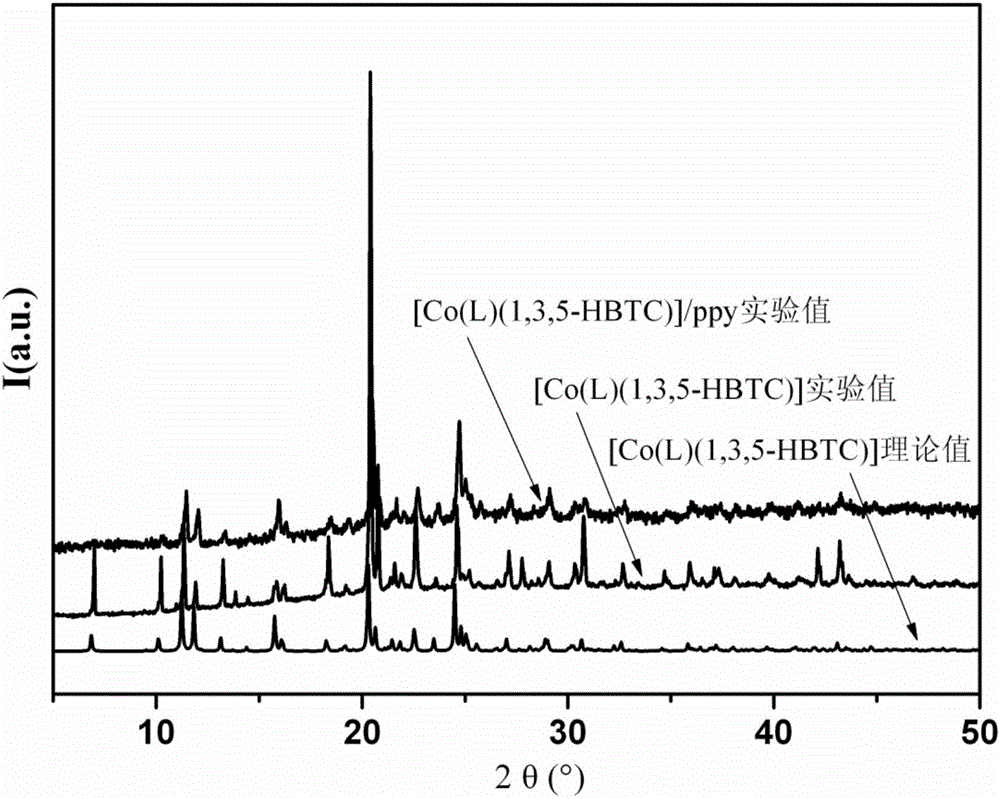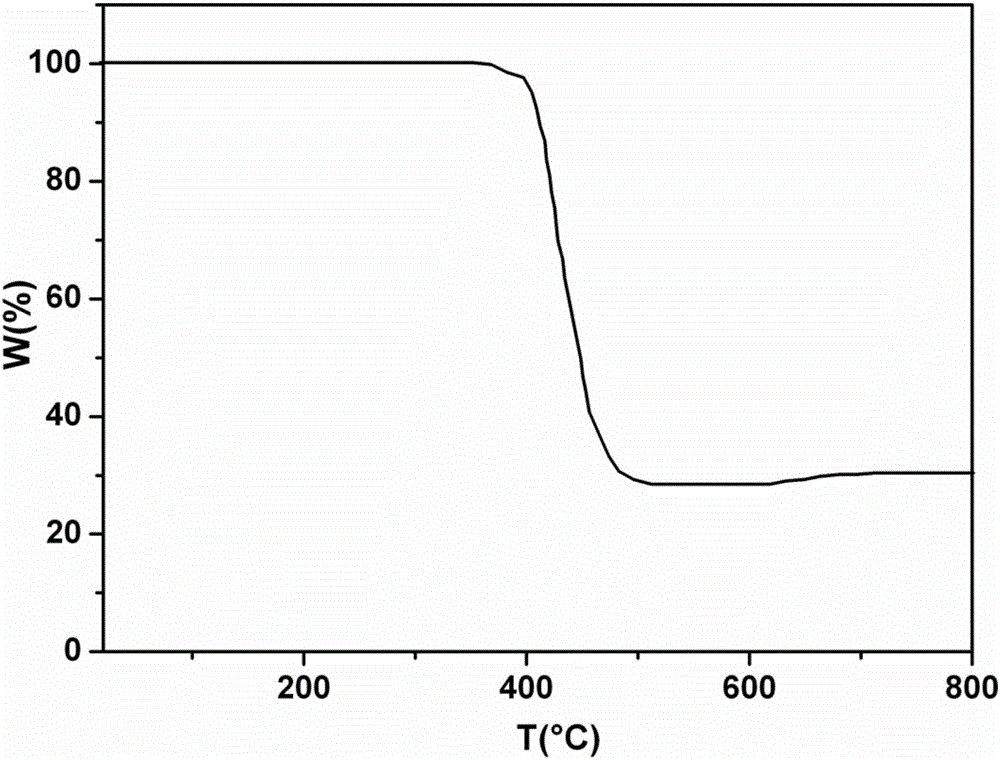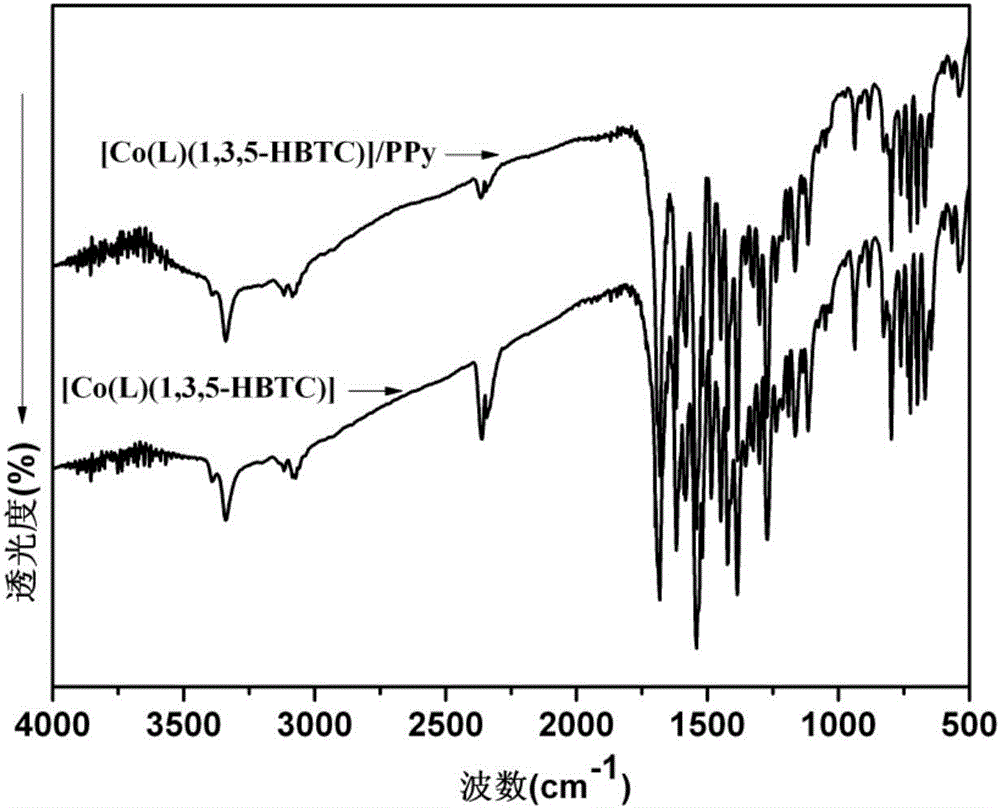A synthetic method of a polypyrrole-functionalized cobalt complex composite material and applications of the material
A technology of cobalt complexes and composite materials, applied in organic compound/hydride/coordination complex catalysts, chemical instruments and methods, special compound water treatment, etc., can solve the problem of insufficient photocatalytic effect, insufficient activity, photogenerated electron Easy to recombine with holes and other problems, to achieve the effect of increasing hydrophilicity, enhancing affinity, and high catalytic degradation efficiency
- Summary
- Abstract
- Description
- Claims
- Application Information
AI Technical Summary
Problems solved by technology
Method used
Image
Examples
Embodiment 1~ Embodiment 3
[0047] Embodiment 1~Example 3 is based on the synthesis of organic ligand function cobalt complex
Embodiment 1
[0048] Example 1 Synthesis of [Co(L)(1,3,5-HBTC)], wherein L is N,N'-bis(3-pyridine)thiophene-2,5-dicarboxamide, and its structural formula is: 1,3,5-HBTC is trimesic acid monohydrogen radical with 0.1mmol CoCl 2 ·6H 2 O, 0.10 mmol N,N'-bis(3-pyridine)thiophene-2,5-dicarboxamide, 0.1 mmol trimesic acid and 5 mL H 2 O was added to a 25mL beaker in sequence, and stirred at room temperature for 20min to obtain a suspension mixture. After adjusting the pH of the suspension mixture to 4.3 with 1mol / L NaOH solution, it was transferred to a 25mL autoclave and heated at 5°C / h The temperature was raised to 110°C, kept under hydrothermal conditions for 48 hours, and the temperature was lowered to room temperature at a cooling rate of 5°C / h to obtain pink blocky crystals, which were washed alternately with deionized water and ethanol for 3 times, and dried naturally at room temperature. Obtain [Co(L)(1,3,5-HBTC)], the productive rate is 45%, and its XRD diffraction pattern is as follows...
Embodiment 2
[0049] Example 2 Synthesis of [Co(L)(1,3,5-HBTC)], wherein L is N,N'-bis(3-pyridine)thiophene-2,5-dicarboxamide, 1,3,5 -HBTC is 0.2mmol CoCl 2 ·6H 2 O, 0.10 mmol N,N'-bis(3-pyridine)thiophene-2,5-dicarboxamide, 0.15 mmol trimesic acid and 10 mL H 2 O was sequentially added to a 25mL beaker, stirred at room temperature for 30min to obtain a suspension mixture, adjusted the pH of the suspension mixture to 5.3 with 1mol / L NaOH solution, then transferred to a 25mL autoclave, heated at 5°C / h The temperature was raised to 120°C, kept under hydrothermal conditions for 72 hours, and the temperature was lowered to room temperature at a cooling rate of 5°C / h to obtain pink blocky crystals, which were washed alternately with deionized water and ethanol for 4 times, and dried naturally at room temperature. Obtain [Co(L)(1,3,5-HBTC)], the productive rate is 65%, and its XRD diffraction pattern is as follows figure 1 As shown, its coordination environment diagram is shown as Figure 10 ...
PUM
| Property | Measurement | Unit |
|---|---|---|
| energy | aaaaa | aaaaa |
| energy | aaaaa | aaaaa |
Abstract
Description
Claims
Application Information
 Login to View More
Login to View More - R&D
- Intellectual Property
- Life Sciences
- Materials
- Tech Scout
- Unparalleled Data Quality
- Higher Quality Content
- 60% Fewer Hallucinations
Browse by: Latest US Patents, China's latest patents, Technical Efficacy Thesaurus, Application Domain, Technology Topic, Popular Technical Reports.
© 2025 PatSnap. All rights reserved.Legal|Privacy policy|Modern Slavery Act Transparency Statement|Sitemap|About US| Contact US: help@patsnap.com



